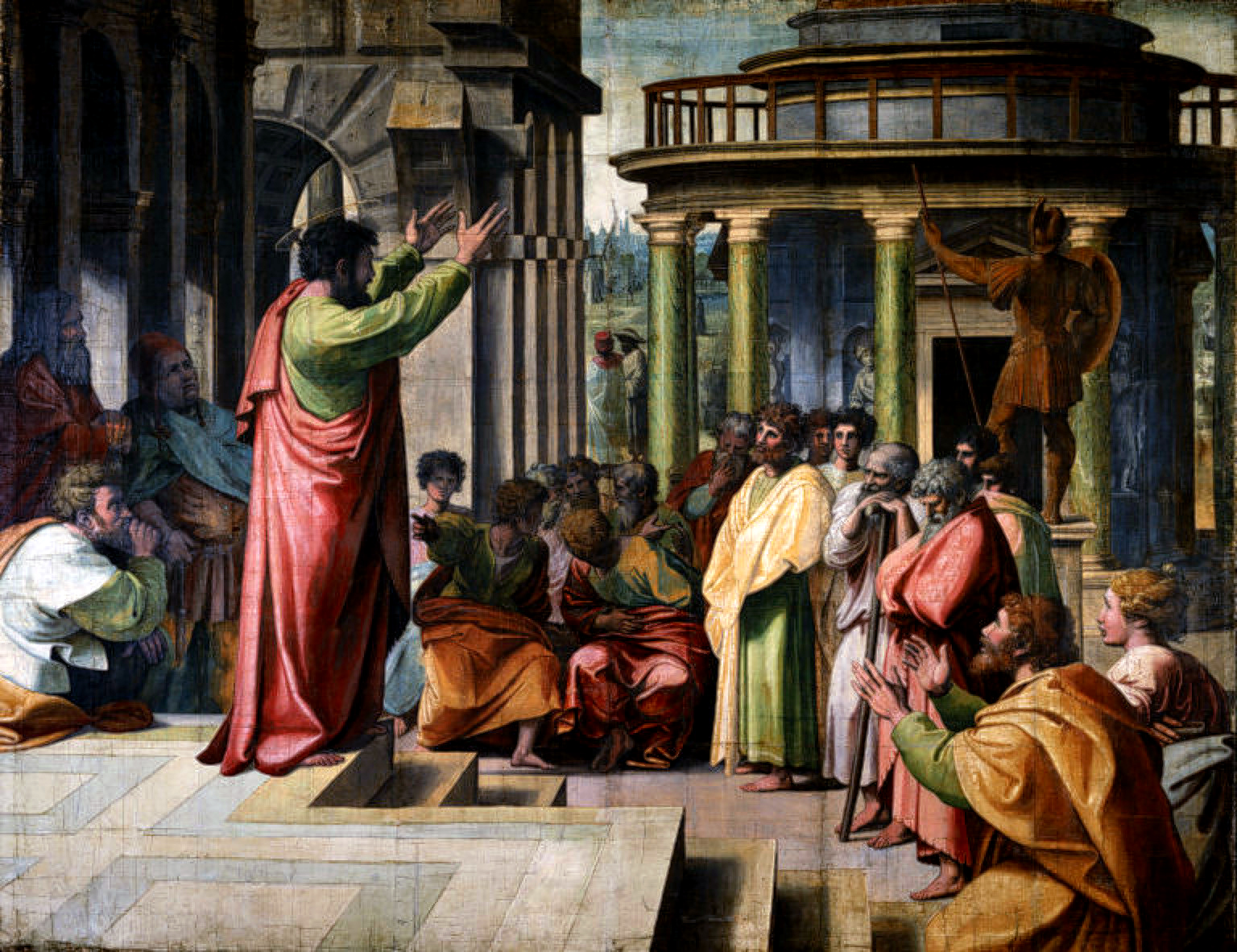Is There Evidence That Jesus Was More Than Just A Man?
Recently, we’ve been discussing who Jesus of Nazareth was. We’ve also explored his own personal claims as to his identity. The truth is, though, that people can freely say whatever they want. But, when they make claims like being the all-powerful creator of the universe, we think them crazy unless there is some evidence to back that up. Did Jesus give any evidence that he was God? Or, did he just go around saying things and telling people to just believe what he said?
Jesus Performed Many Miracles
The eyewitnesses to Jesus’ life and ministry documented approximately 37 occasions when Jesus performed what we would call supernatural feats. He engaged with the world around him in ways that cannot be attributed to scientific trickery or illusion. These miracles can be grouped into 4 categories. Here are some of them
- Environmental Manipulation – Turning water into wine (John 2:1-11), calming a storm at sea (Matthew 8:23-27, Mark 4:35-41, Luke 8:22-25)), feeding 5,000+ on 5 loaves of bread and 2 fish (Matthew 14:13-21, Mark 6:30-44, Luke 9:10-17, John 6:1-15)
- Authority over the Supernatural Realm – a man with an unclean spirit in Capernaum (Mark 1:21-27, Luke 4:31-36), casting demons into pigs (Matthew 8:28-33, Mark 5:1-20, Luke 8:26-39), a boy with an unclean spirit (Matthew 17:14-20, Mark 9:14-29, Luke 9:37-43)
- Ability To Heal Extreme Conditions – a Centurion’s paralyzed servant (Matthew 8:5-13, Luke 7:1-10), a man with a withered hand (Matthew 12:9-1, Mark 43:1-6, Luke 6:6-11), a servant’s severed ear while he is being arrested (Luke 22:50-51)
Healing is by far the biggest group of miracles Jesus performed (21). And it would be easy to dismiss them as luck, superior knowledge of healing, or even con artistry. We certainly see enough of this kind of thing in our present age. Thankfully, though, the eyewitnesses record many details about the preexisting conditions of the people who were healed. When Jesus healed people who were crippled, it wasn’t a guy with a sprained ankle – where the injuries were mostly minor and couldn’t be seen from the outside. These people had obvious physical deformities. Their ankles were turned inwards. Or their hands were withered. It’s one thing to see someone in a wheelchair who looks normal otherwise get wheeled up in front of a healer and be “healed”. It’s another to see that person get wheeled up on stage with their ankles sticking out at unnatural angles from their legs. Those are the kinds of people Jesus was healing.
- Bringing People Back From The Dead – the widow’s son in Nain (Luke 7:11-17), Jairus’ daughter (Matthew 9:18,23-26; Mark 5:21-24,35-43; Luke 8:40-42,49-56), Lazarus (John 11:1-45)
Raising people from the dead is another one of those things that’s easy to dismiss. Our first thought might be that people wrongly assumed someone was dead when they were not. And, Jesus just kind of woke them up. I mean, I know if I saw someone lying very still, it would be easy for me to mistake them for dead if they hadn’t moved in quite a while.
Keep in mind, though, that 1st-century Jewish commoners had a lot more personal experience with dead bodies than we do. When someone we know dies, there is a medical examiner to verify the death, an ambulance to take the body to a funeral home, and a mortician to prepare the body. The majority of us never touch dead bodies. The Jews of the day did all that themselves, though. They knew what a dead body looked like and felt like. In the case of the widow’s son, Jesus stopped the funeral procession. So, he had been dead for some time. And, Lazarus had been dead for 4 days before Jesus got to him. Jesus even delayed so that there would be no question in peoples’ minds that Lazarus was dead by the time Jesus got there.
Jesus Predicted The Future
Jesus made many prediction about future events and these predictions came true. It would be easy to dismiss some of these claims as merely really good guesses. But, some of Jesus’ predictions were too specific and came true in too uncanny of ways for them to have been anything other than foreknowledge of future events.
A great number of Jesus’ predictions had to do with his last days. He seemed to know pretty clearly what his last days were going to look like. He predicted he was going to be betrayed, arrested, all of his followers would desert him and he would be executed. Some of these predictions might get dismissed as Jesus being able to read people really well or maybe he caught some rumors circulating about him and the plans the Jewish leaders had for him.
There is one prediction, however, that was too specific to be guessed beforehand. That was the way Peter denied him. It’s true that, if I had been spending most of my time with someone for 3 years, I could probably guess what they would do in a stressful situation. It’s one thing to say “if the cops question my buddy, Peter, he’s going to deny he knows me”. But, saying that he would be asked three times if he knew me and he would deny it three times – before the rooster crows – is prediction on a whole other level.
Jesus also predicted that he would be resurrected. And not only resurrected, he predicted that it would be on the third day after his execution (Matthew 16:21, Mark 8:31, Luke 9:22). Now, having a leader predict he would come back from the dead was nothing new. Alexander the Great said the same thing. And, he conspired with his friends to have them steal his body to make it look like he did. The Jewish leaders were onto this trick, though, which is why they demanded Pilate place a bunch of guards in front of Jesus’ tomb (Matthew 27:62-66).
Jesus predicted things that would come shortly after his death. He predicted that Jerusalem would be destroyed. And he predicted exactly how it would be done. He told the Pharisees that the city would be surrounded and the walls of the city would be torn down (Luke 19:43-44). Less than 40 years later, in 70 A.D., the Roman general Titus surrounded the city, laid siege to it, and leveled much of it. Many holy sites were demolished and relics carted off.
Related to this event was another of Jesus’ predictions. He predicted that the temple would be torn down (Matthew 24:1-2, Mark 13:2, Luke 21:6). As part of the sacking of Jerusalem, Titus destroyed the temple. All of the stones were cast down.
Jesus Came Back From The Dead
The final piece of evidence that Jesus gave regarding his identity was in his coming back from the dead. Many people had said they would come back, but Jesus actually did it. And, there’s a lot of great evidence to show that he did it. He predicted when he would die, how he would die, that he would come back from the dead, and on what day. Alternate theories have been proposed, of course. But none of them make much sense regarding the evidence we have.
Jesus Was An Evidentialist
Modern Christians often get characterized as having a faith that exists in spite of evidence to the contrary. This challenge comes because the person making it doesn’t understand what really counts as evidence and what the Biblical view of faith is. The word “faith” today conjures up images of simple people living in blissful ignorance of reality. People who believe in things that can’t be seen. People who deny what their faculties tell them in order to keep hold of some fantasy. But, this isn’t what the authors of the New Testament meant when they used the word “faith”. And it certainly isn’t how Jesus led his life or expected others to think about the things he said and the requirements he made.
It would be one thing if Jesus walked around, teaching to the people, and telling them “hey, man. You just gotta believe I’m God”. But, that’s not what he did. All of the things he did that we’ve discussed above – the miracles, the predicting of the future, dying and then returning to life – these things were all done to give evidence to back up his claims. And he did these things (apart from the resurrection) before he claimed to be God. In one interaction with the Pharisees, Jesus tells them “I told you, and you do not believe. The works that I do in my Father’s name bear witness about me,” (John 10:25). John even tells us towards the end of his gospel that Jesus did so many things to show who he was that they couldn’t all be written down. But, the ones John wrote were documented so that we would believe (John 20:30-31).
One of the best examples of Jesus being an evidentialist is in an interaction with the disciples of John the Baptist. It occurs in both Matthew 11:1-5 and Luke 7:18-22. John has been sitting in the prison of Herod Antipas. And he starts to have doubts about who he thought Jesus was. So, he sent some of his disciples to Jesus to ask him if he was the one everyone was waiting for or if John got it wrong.
Now, remember; John was Jesus’ cousin. And, John had witnessed the Holy Spirit descending upon Jesus, heard God speak from Heaven, and heard him declare Jesus his son with whom he was well-pleased. So, John had already seen a lot. Jesus could have very easily said to John’s disciples “just go tell John to have faith”. I wouldn’t have blamed him if he got a little offended, honestly. He could have reminded the disciples of all the things John had witnessed and reprimanded him for his doubt.
What did Jesus do instead? He gave them more evidence. He turned them into eyewitnesses of who he was. In front of them, he healed blindness and leprosy, made the lame walk, and raised people from the dead. After he did these things, he told John’s followers “now go and tell John what you have seen and heard“. In other words, give him the evidence.
Jesus Gave Evidence That He Was God
Jesus made some pretty wild claims about who he was. The good news for us is he actually backed those claims up with evidence. In fact, during his ministry he gave the evidence before he started making his claims to be God. He didn’t walk around telling everyone they “just have to have faith”. No, he performed many miracles as evidence to back up his claims – the greatest being his resurrection from the dead.
Christianity is a world view based on historical evidence. Not on blind faith. And, it all starts with examining the life of Jesus of Nazareth as recorded in the eyewitness testimony of the people who were there.
Share This Story, Choose Your Platform!
latest video
news via inbox
Nulla turp dis cursus. Integer liberos euismod pretium faucibua








this article is flawed in its approach to the existence of Christ. Jesus was 100% real based on historical account corelating what he did at certain points. This does not argue anything against the fact that the claims of miracles are outlandish are could be nothing more than flawed testimony.
How can it be verified that these things happened when countless times through human history people have claimed to do crazy things and some people have also claimed to see crazy things. This does not translate to truth, and it is wrong to treat it as truth when it clearly cannot be confirmed to that extent.
Hi davvy,
Thank you for your thoughtful comment.
Why do you think that the claims are outlandish? You also say that he claims _could_ be nothing more than flawed testimony. Do you think that their testimony is flawed? If so, why? You bring up the requirement of verification. How would you propose we verify these things apart from eyewitness testimony?
I like this article a lot, it will definitely help me on my apologetics journey of learning how to defend the gospel.
i love how this article specifically defined faith, and how it emphasized that Jesus truly did back up his word, whether that was through various miracles, resurrecting from the dead, or prophesying very specific events. it’s undeniable to try to invalidate his miracles when they were obvious deformaties, and scientifically they were not curable, especially with the resources they had back then. it’s a gift to study how Jesus continued to spread His word while also giving more and more evidence for us to believe.
This article was very intriguing, though I wish there was a bit more evidence supporting rather than just claims alone. Nonetheless I do believe in Jesus and his miracles.
He performed many miracles, and not to just perform them but to back up his statement that he is God. These aren’t just unrealistic claims from out of this world. People in the past have been healed and changed through Jesus’s miracles and works throughout his life.
This article was very helpful and informative. It helped me better understand the topic, and I enjoyed reading it.
A lot of people will claim that Jesus was just a man of wisdom and a great teacher but those can’t align with what MULTIPLE eyewitnesses have stated. I like how in the article it states the bible verses of how Jesus performed weather changes, casted demons out of pigs, and miracles like healing uncurable diseases that some of the people had. It really shows that there aren’t really any valid arguments against these witnesses which in turn should mean that if they all say the same thing, that should mean they are true and Jesus IS the messiah.
I like this article. It shows how Jesus lived his life 100% man and 100% God. It tells of how He used miracles and healings for good and to lead people to Christ.
I love how this article states various points that support answering the main question but also brings in different examples of these concepts. This shows that the author knows what they are talking about by providing specific details of what happened.
Great article! Very well written and nice to see all the evidence laid out so easily. I love all of the scripture quotations. Look forward to seeing more like this!
I like this whole article because it has specific points brought up to be discussed, and once mentioned, deeply dug into the thought and expertly explained with each reason on why Jesus is the way he is and how his own works prove that he is the Son of God. I genuinely appreciate your efforts in writing up these articles and putting your own time, mind, and heart into each word and segment. Thank you!
But let me get down to my thoughts. I genuinely agree Christianity is a world view based on historical accounts, mainly because the Bible is one major historical document that can defend and explain itself. Through all the tales and pieces of history it brings, it brings us lessons for us human beings in our current time and God shows us that our problems aren’t the first and won’t be the last. Rather there is a way to overcome these struggles, and that is mainly through him. Anyways, like I said again, thank you for your article and it was a pleasure reading!
this article does a great job at defending the faith. he preformed many miracles and it really helped me learn a little bit more about the faith and how to defend it.
I think it’s interesting that this article pointed out that the healing miracles Jesus performed would have been hard to fake. I have never thought about this before. Also, it stood out to me that Jesus predicted his death and resurrection many times, in the verses cited. I like how there are a lot of verse references throughout the article